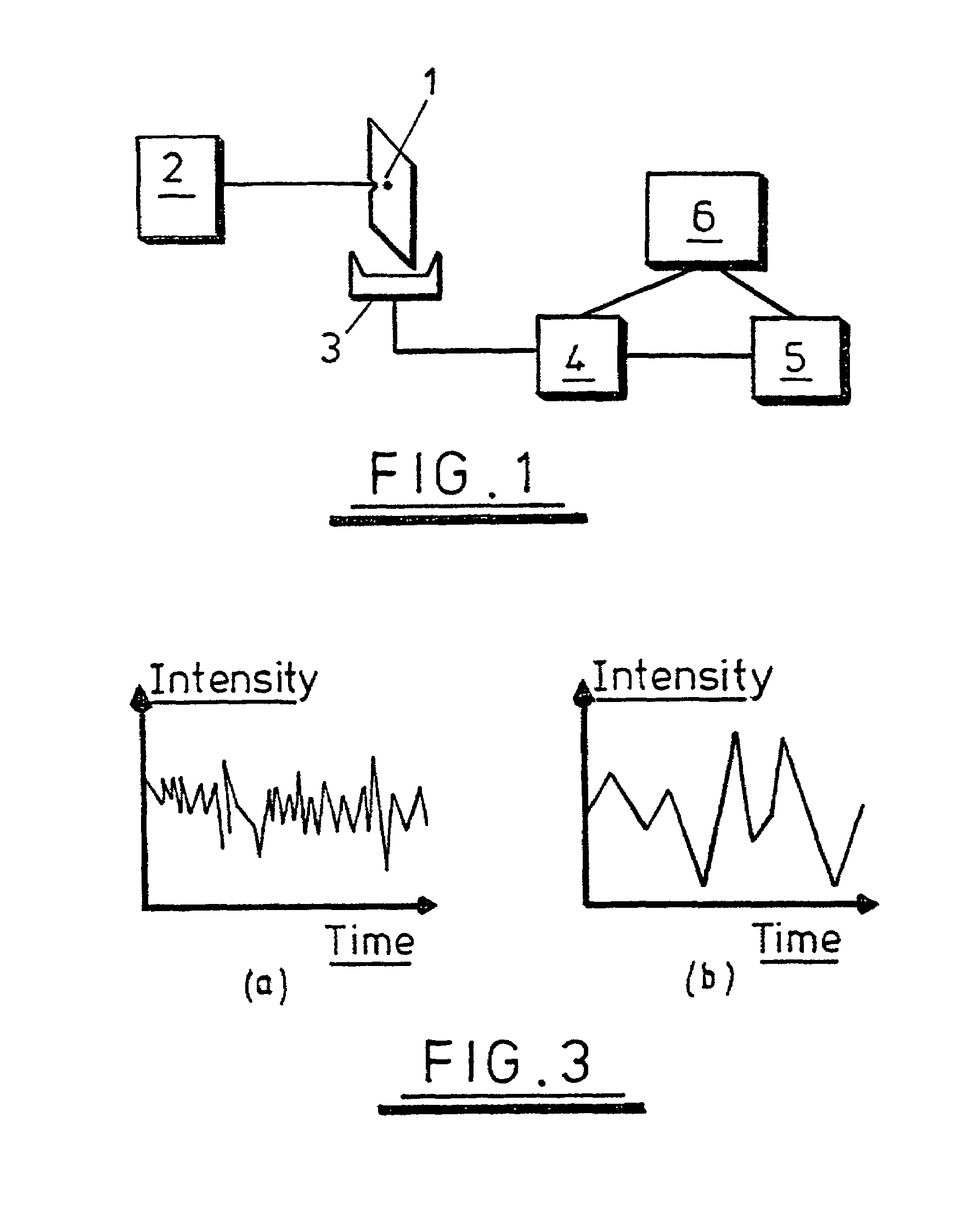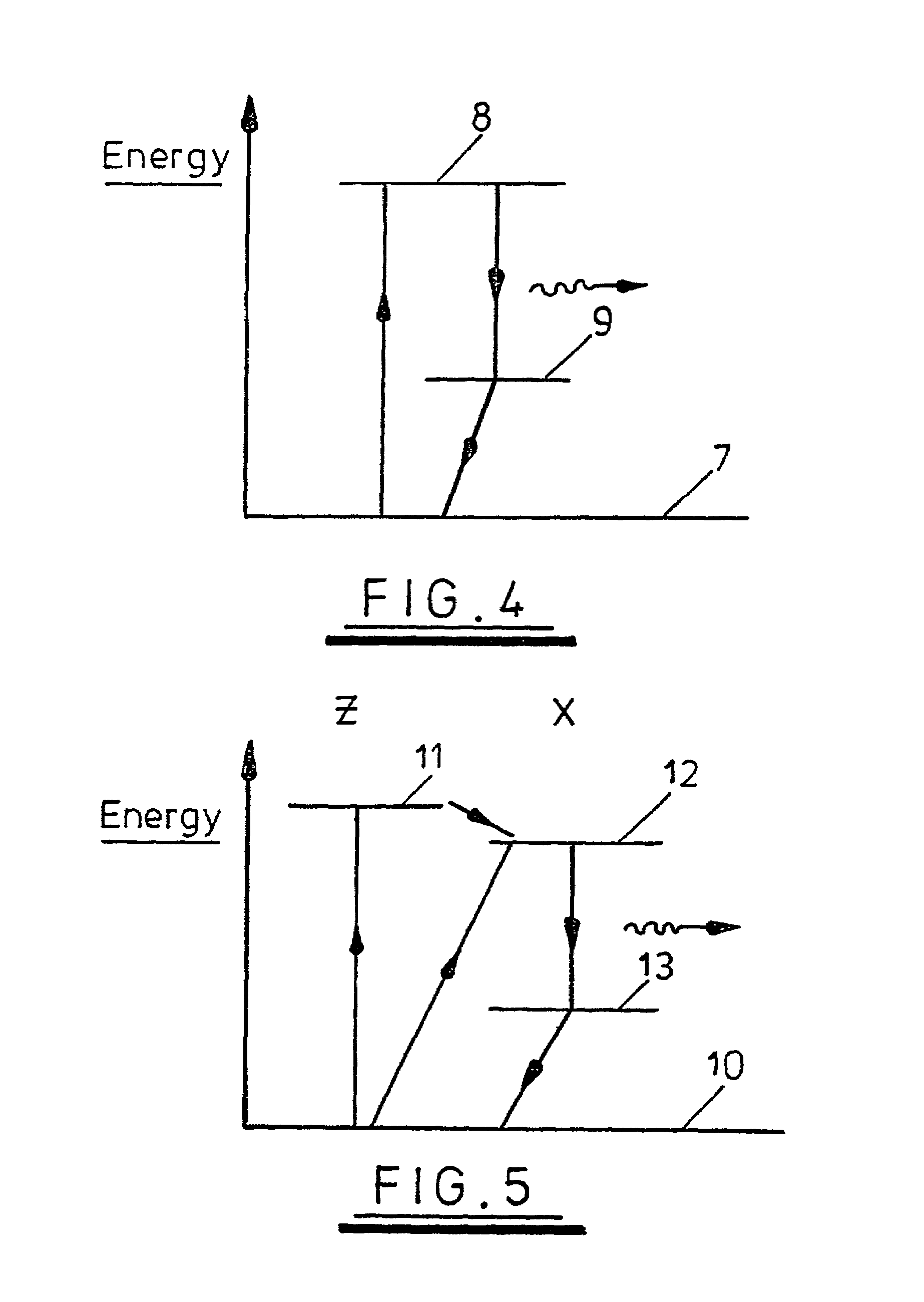Analysis of a sample to determine its characteristic cycle time
a sample and cycle time technology, applied in the field of fluorescence analysis, can solve the problems of requiring a sample of many hundreds of fluorophores and high intensity illumination, requiring a comparatively long average process, and unsuitable for modern high speed processing of many measurements, so as to maximise the signal-to-noise ratio of detected signals and avoid quenching of fluorophores.
- Summary
- Abstract
- Description
- Claims
- Application Information
AI Technical Summary
Benefits of technology
Problems solved by technology
Method used
Image
Examples
Embodiment Construction
[0075]Referring first to FIG. 1, a fluorescence detection apparatus comprises a sample 1 and a laser 2 which is arranged to illuminate the sample 1 with a continuous beam of light. A detector 3 is provided to detect photons emitted by the sample 1. The detector 3 may be provided with a filter (not shown) to prevent the detection of light emitted by the laser 2. An auto-correlator 4 correlates the detected signal to give a correlation, and a processor 5 processes the output of the detector to measure the characteristic lifetime of the fluorophores comprising the sample 1. The operation of the processor 5 is described below. The output from the processor 5 and / or the auto-correlator 4 may be displayed on a monitor 6.
[0076]FIG. 2 illustrates the principle of operation of the invention. FIG. 2a represents the result of illuminating a single fluorophore with a continuous beam of high intensity light. A photon in the high intensity beam will excite the fluorophore to an excited state, and...
PUM
 Login to View More
Login to View More Abstract
Description
Claims
Application Information
 Login to View More
Login to View More - R&D
- Intellectual Property
- Life Sciences
- Materials
- Tech Scout
- Unparalleled Data Quality
- Higher Quality Content
- 60% Fewer Hallucinations
Browse by: Latest US Patents, China's latest patents, Technical Efficacy Thesaurus, Application Domain, Technology Topic, Popular Technical Reports.
© 2025 PatSnap. All rights reserved.Legal|Privacy policy|Modern Slavery Act Transparency Statement|Sitemap|About US| Contact US: help@patsnap.com



